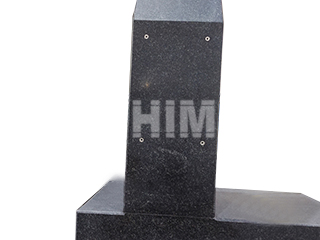When it comes to selecting a precision platform for industrial applications, both granite and ceramic materials are frequently considered due to their high stability and rigidity. However, many manufacturers are often faced with the question: Can ceramic precision platforms replace granite precision platforms? To answer this, it’s essential to compare the two materials in terms of cost, performance, and suitability for specific applications.
Granite precision platforms have long been the industry standard for high-precision measurement and machining. Granite, particularly ZHHIMG® Black Granite, is known for its exceptional material properties such as high density, low thermal expansion, and outstanding resistance to wear. These characteristics provide granite platforms with unparalleled stability and accuracy, making them ideal for applications that require the utmost precision, such as semiconductor manufacturing, aerospace, and high-precision measuring instruments. However, the complex manufacturing process, the sourcing of high-quality granite, and the advanced equipment required to produce these platforms contribute to their relatively high cost.
On the other hand, ceramic precision platforms, which are made from advanced materials like alumina (Al₂O₃), silicon carbide (SiC), and silicon nitride (Si₃N₄), offer similar levels of rigidity and stability, but at a lower cost compared to granite. Ceramics are known for their excellent thermal stability, low expansion rates, and high wear resistance, which makes them a suitable option for many precision applications, particularly in industries that require thermal stability, such as semiconductor production and precision optics. Ceramic platforms tend to be more affordable than granite due to the less complex material processing involved, making them an attractive choice for companies looking for cost-effective solutions without compromising on precision.
Despite the cost savings, ceramic platforms are not always a perfect substitute for granite in every application. Granite platforms provide superior vibration damping and are more resistant to deformation over time, especially under heavy loads. This makes them ideal for applications that require long-term stability and minimal maintenance, such as in large-scale manufacturing equipment and metrology labs. While ceramics offer many advantages, their ability to resist deformation under heavy loads can be less than granite, making them less suitable for certain high-load applications.
In terms of cost, ceramic platforms are generally more affordable than granite, but they can be more expensive than cast iron platforms. The decision to choose one material over the other depends largely on the specific requirements of the application. If high precision, long-term stability, and minimal expansion are critical, granite remains the top choice. However, for applications where cost is a primary concern, and the performance requirements are slightly less stringent, ceramic platforms can serve as a viable alternative, offering excellent performance at a reduced price.
Ultimately, both materials have their place in precision industries, and choosing between them comes down to a balance between performance and cost. For industries that demand the highest levels of accuracy and stability, granite will continue to be the preferred material. However, as ceramic technology advances and its cost-effectiveness increases, it is becoming an increasingly popular choice for many manufacturers looking to optimize their operations.
Post time: Oct-23-2025

